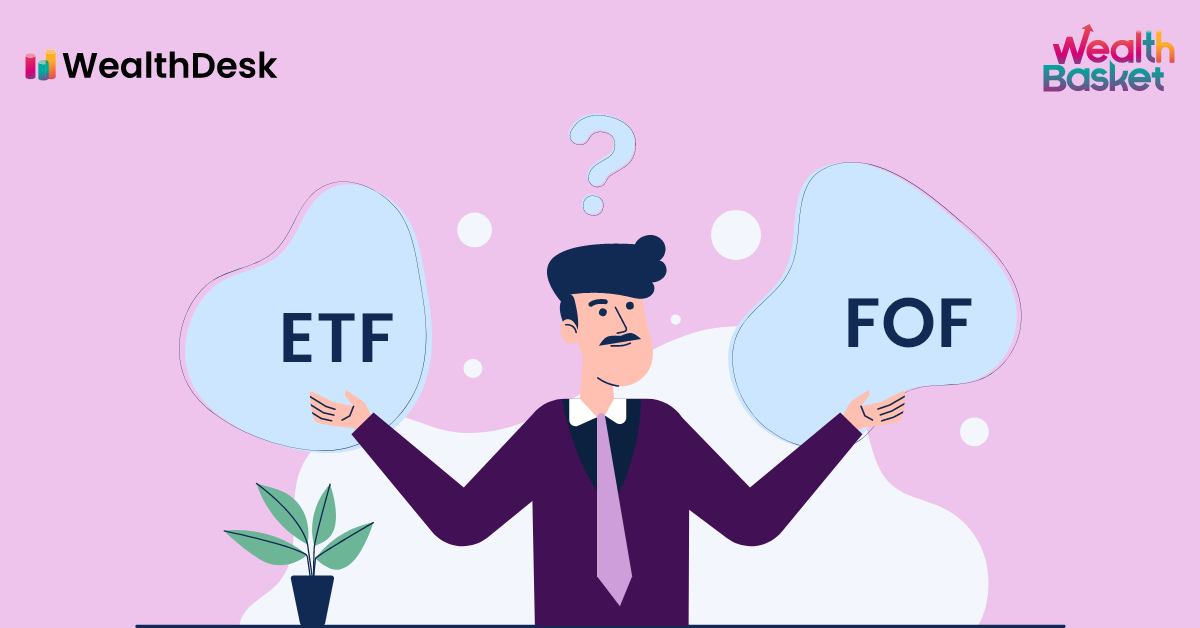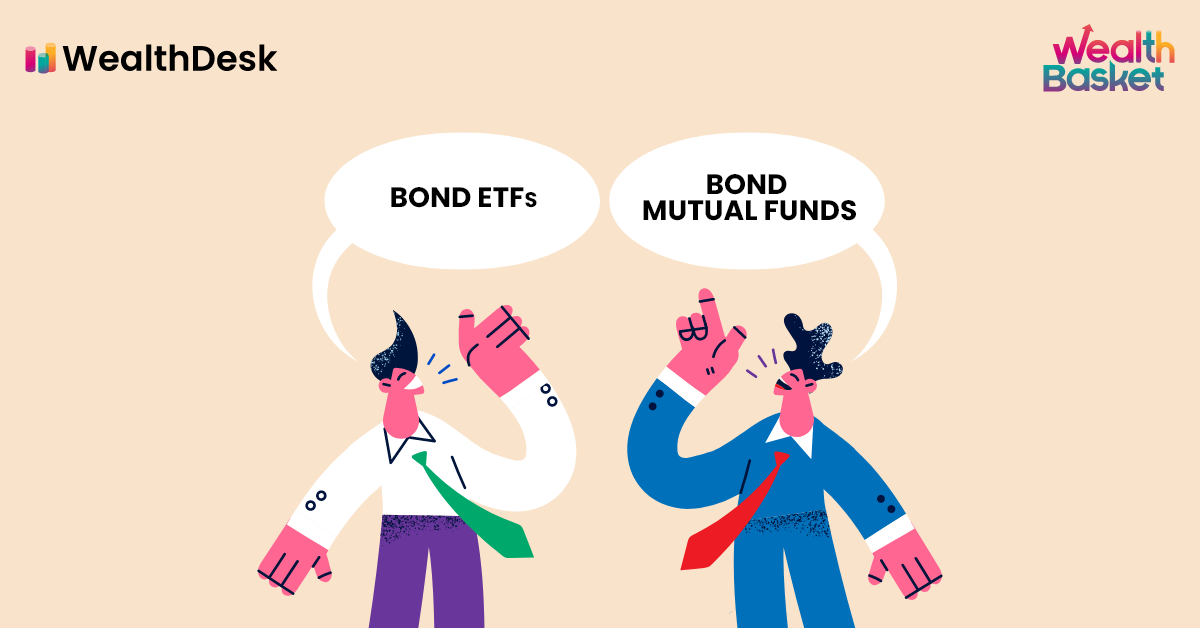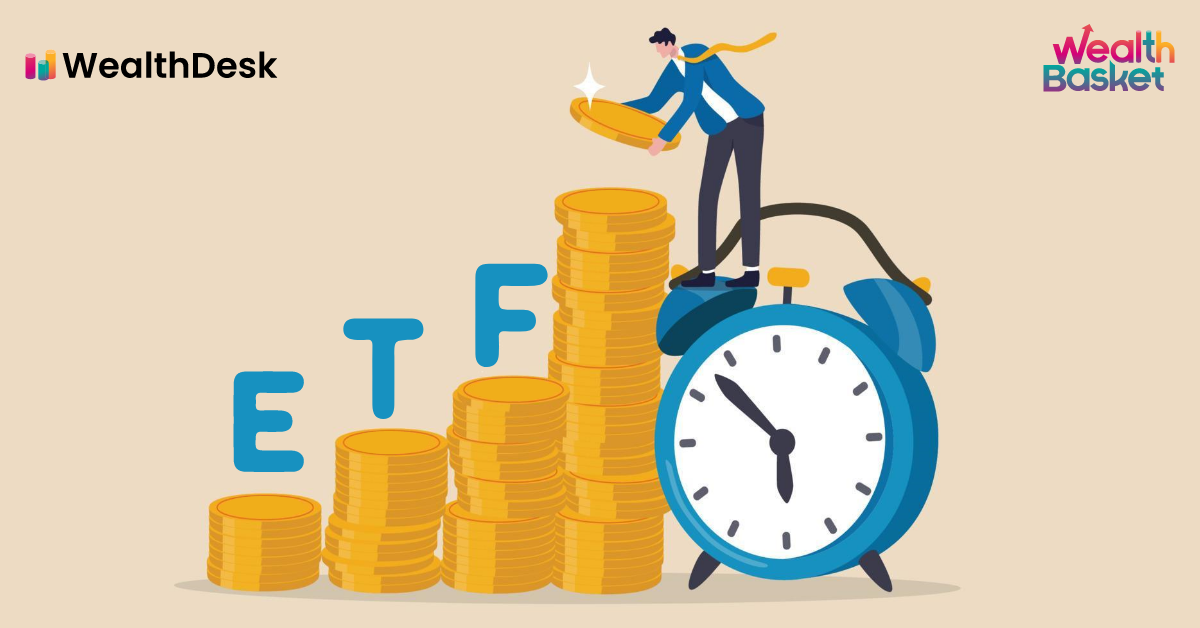While ETFs and FoFs are both forms of indirect investment, they can differ quite a bit. These differences are not limited to their structure. There are differences in pricing, taxation, and liquidity. In this blog, we cover all these differences.
What are ETFs?
Exchange-traded funds (ETFs) have features of both stocks and mutual funds. They are publicly traded on exchanges just like stocks. At the same, they allow you to spread your money across various asset classes and sectors.
Exchange-traded funds are a relatively new phenomenon. India’s oldest ETF was launched less than 21 years ago (launched December 2001). In comparison, the oldest mutual fund in India is nearly 60 years old. ETFs were first developed in the 1990s as securities that allowed you to invest in passive index funds. But, nowadays, in India, you can find Smart Beta ETFs. These ETFs invest in stocks that are present in a benchmark index but the weights of each stock are fixed by an investment strategy.
You can make ETF investments as long as you have the necessary funds and a Demat account.
Pros of ETFs
- Allows diversification
- Tradeable like a stock
- Low chance of discount or premium in price
Cons of ETFs
- Tracking errors (in index ETFs)
What are FoFs?
Fund of Funds (FoFs) are funds that invest in other funds. Instead of investing directly in stocks, commodities or real estate, FoFs will invest in funds that invest directly in assets or other FoFs. In India, there are various FoF mutual funds you can invest in but currently, no ETF FoFs exist.
The aim of FoFs is to achieve a higher level of diversification by investing in various fund categories. For example, an FoF could invest in index funds of gold, bonds, Nifty, and NASDAQ along with growth funds. Such an FoF will allow you to spread your funds across stocks (domestic and foreign), commodities, and bonds. FoFs were made for investors who do not want to go through the hassle of choosing funds to achieve broad diversification.
FoFs can be classified based on the funds they invest in. If an FoF invests only in funds made by its own company, it is called a fettered FoF. If an FoF can invest in any fund, it is called an unfettered FoF.
Pros of FoFs
- High levels of diversification
- Low levels of risk
- Exposure to various assets that you may not be able to invest in directly
- Professional management
Cons of FoFs
- Over-diversification might lower returns
- Additional fees
FoFs vs ETFs: Major Differences
Structure
As we have discussed earlier, Fund of Funds (FoF) are pools of funds. They invest in mutual funds and hedge funds.
ETFs invest directly in stocks, bonds, and commodities like gold and silver.
Liquidity
You can sell FoFs only after markets close. Also, you can sell FoFs only to the companies that made them. So, FoFs are considered to have lower liquidity.
ETFs can be sold freely on the exchanges during market hours. Having higher liquidity than mutual funds is considered a USP of ETFs.
Prices
The prices of FoFs are calculated after the market closes in the form of NAVs (Net Asset Value).
The prices of ETFs are determined by the forces of demand and supply. Sometimes, index ETF prices may vary from the value of the index. These errors are called tracking errors.
Taxation
Fund of Funds (FoF) Taxation:
FoFs are taxed as debt funds regardless of the schemes they invest in. Even if the FoF is an equity-based fund, it will be taxed like a debt fund.
Gains from FoFs are called short term capital gains if the FoFs were held for less than 36 months. In this case, the gains will be taxed according to the investor’s income slab.
Gains from FoFs are called long term capital gains if the FoFs were held for more than 36 months. In this case, the gains will be taxed at 20% with indexation.
ETF Taxation:
Taxation on equity ETFs depends on the period of time they were held. Gains from equity ETFs are called short term gains if the ETF was held for less than one year. In this case, the gains are taxed at 15%.
On the other hand, gains from equity ETFs are called long term gains if the ETF was held for more than one year. In this case, if the gains are more than ₹1 lakh, they are taxed at 10%.
For ETFs not classified as equity ETFs, the definition of short term and long term is different. Here, the long term capital gains tax is applicable if they are held for more than 3 years and the short term capital gains tax is applicable if they are held for less than 3 years.
The following table summarizes the differences between FoFs and ETFs:
| FoFs | ETFs |
| Invest in other funds | Invest in assets like stocks, bonds and commodities |
| Low liquidity as they can only be sold back to the fund manager after market hours | Higher liquidity as they can be traded on the exchanges |
| NAVs are calculated after market hours | Prices are determined by forces of demand and supply |
| Taxed as debt funds | Taxation differs between equity ETFs and other types of ETFs |
FoFs or ETFs? Which is better?
There might not be a clear winner in the comparison of FoFs vs ETFs, but it is easier to tell which would suit you better. Fund of Funds (FoF) schemes would suit you better if you prefer to have professional assistance in selecting the funds to invest in and achieve a higher level of diversification.
If you wish to select funds on your own and curate a portfolio with diversification levels that suit you, ETFs would be a more appropriate pick for you.
On WealthDesk, you can find portfolios of stocks and ETFs called WealthBaskets. Each WealthBasket has a certain strategy and follows a certain strategy. These WealthBaskets are curated and managed by SEBI registered professionals.
FAQs
FoF mutual funds invest in other funds instead of directly investing in assets like stocks, bonds, etc.
Fund of Funds (FoFs) invest in other mutual funds or hedge funds instead of making direct investments. Exchange-traded funds (ETFs) invest in assets like stocks, commodities and bonds.
Fund of Funds (FoFs) are taxed as debt funds. If FoFs are held for less than 36 months, the gains made are called short term capital gains and taxed according to the investor’s tax slab. If they are held for more than 36 months, the gains are called long term capital gains and taxed at 20% with indexation.
Fund of Funds (FoFs) have a higher expense ratio than funds that make direct investments into assets.


















